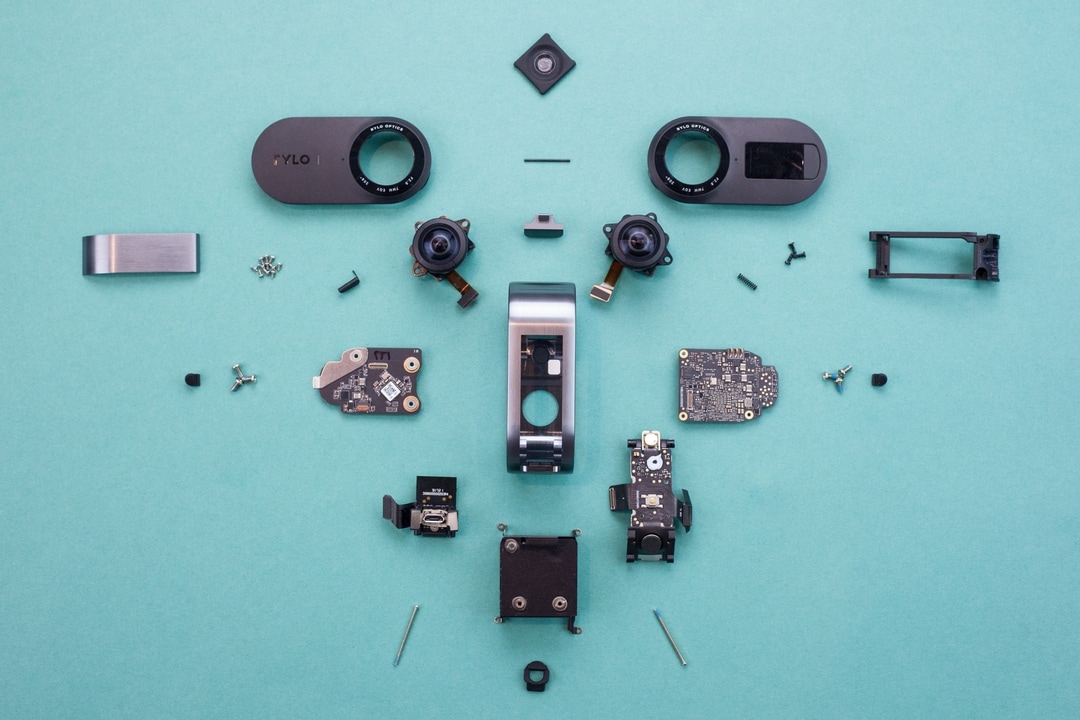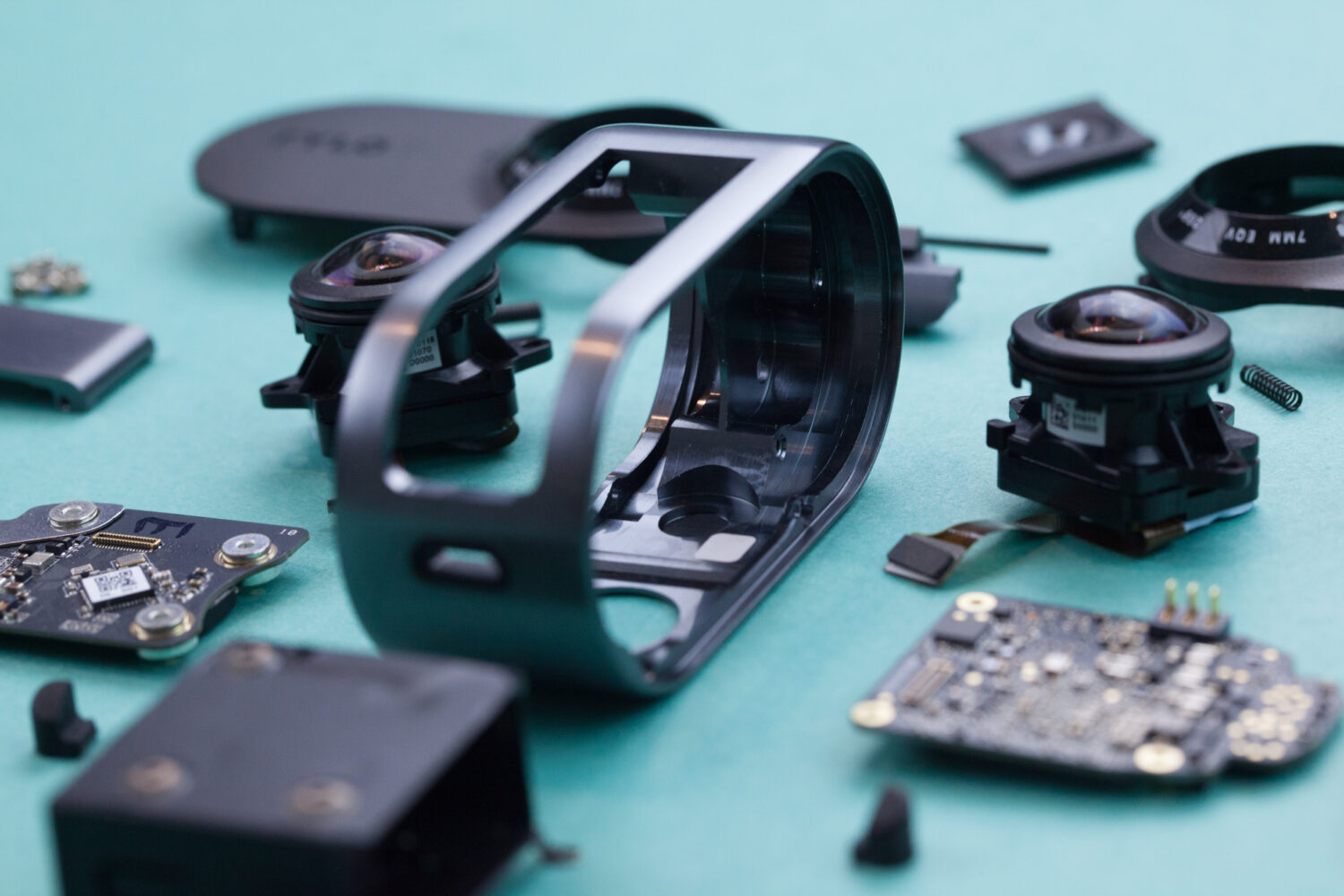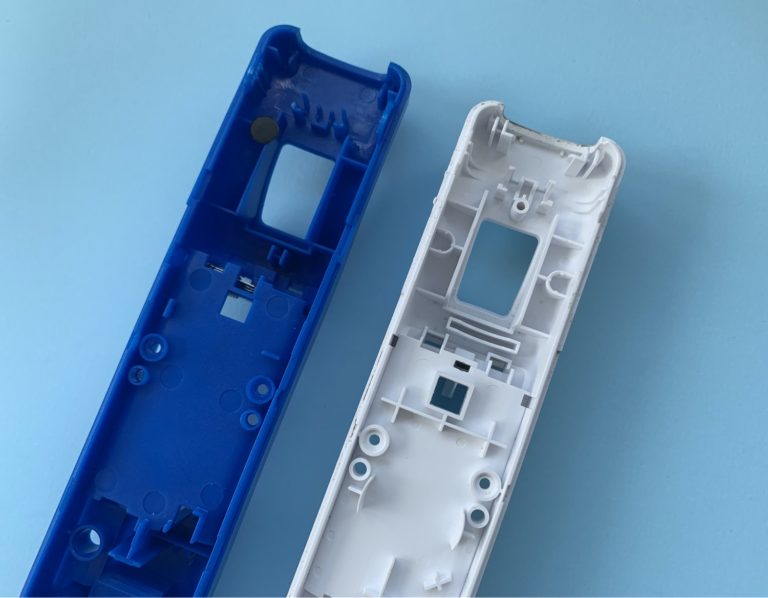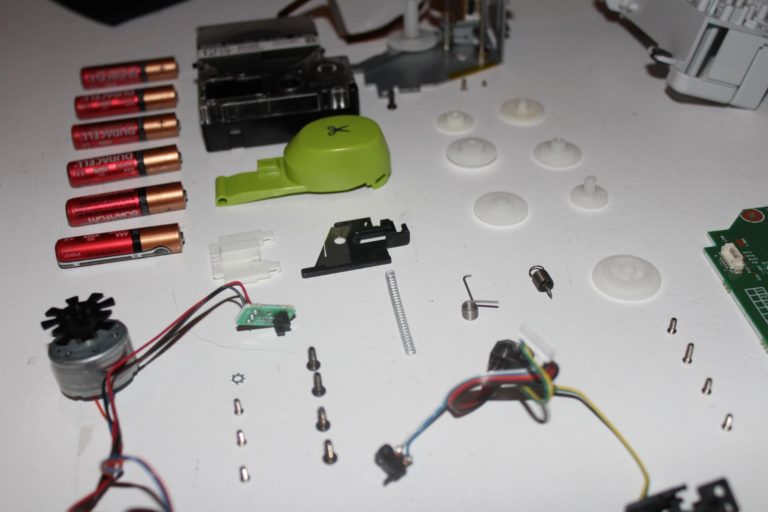For this teardown, we were joined by Jon Denby, a long time Fictiv customer and the Product Design Lead behind Rylo — a small, yet powerful 360° camera. Jon provided us with tons of great insight into the product design choices behind Rylo.
Rylo’s magic lies in a phone app that stabilizes the 360° video and allows the user to track objects, scenery, and even people as they move through the shot. This means you only need to record one shot and then can re-cam it however you want after the fact. While the software is Rylo’s big selling point, the camera hardware has clever design hidden throughout, resulting in a compact product with a high-quality feel.
Here are the features of interest we’re drilling into for this teardown:
- Camera Enclosure – a single CNC machined part that serves as the camera’s backbone
- Soft Catch Battery Door Mechanism – this mechanism is hidden in the battery door hinge and provides a clean, quality feel to the door opening
- Hidden Screw Enclosure Design – Rylo makes use of tabs and snap fits to minimize the number of screws and steps needed to assemble the camera.
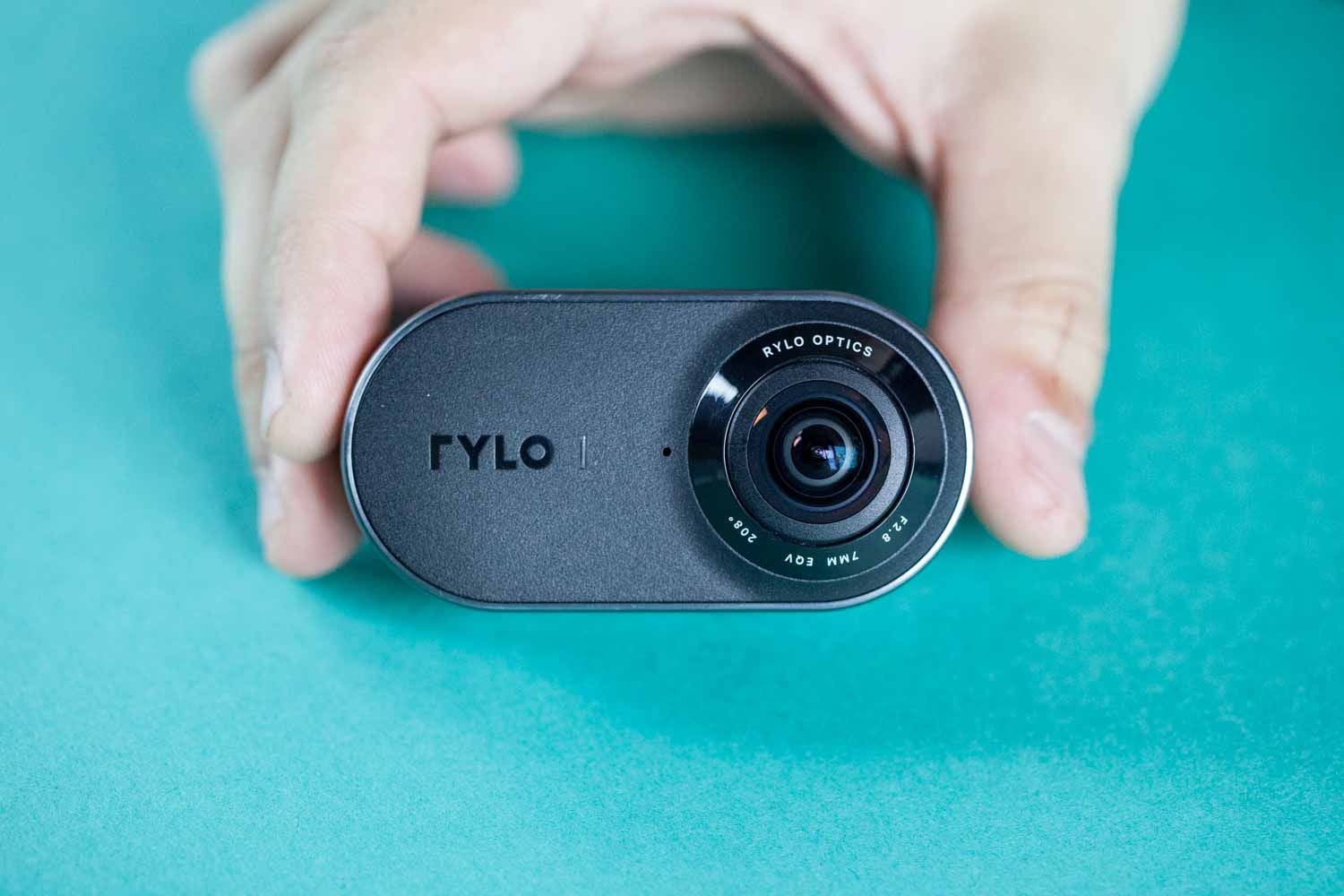
Camera Enclosure
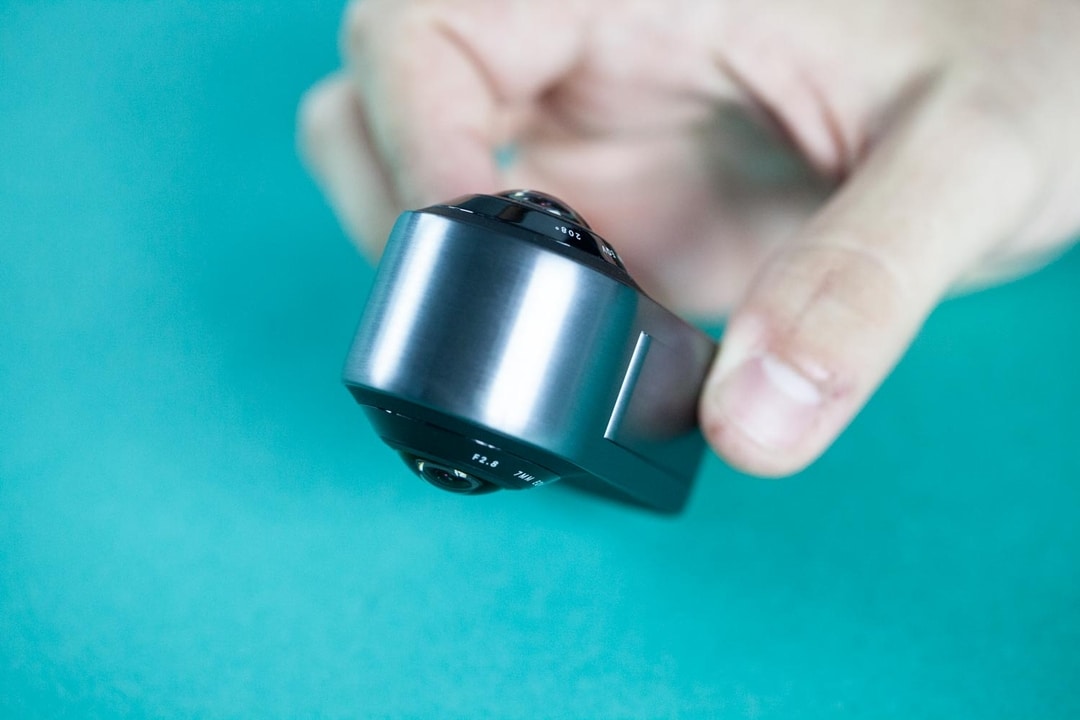
The brushed metal band that rings the side of the Rylo is actually not a band at all, but a fully CNC milled enclosure. It serves as Rylo’s backbone and all components mount to it.
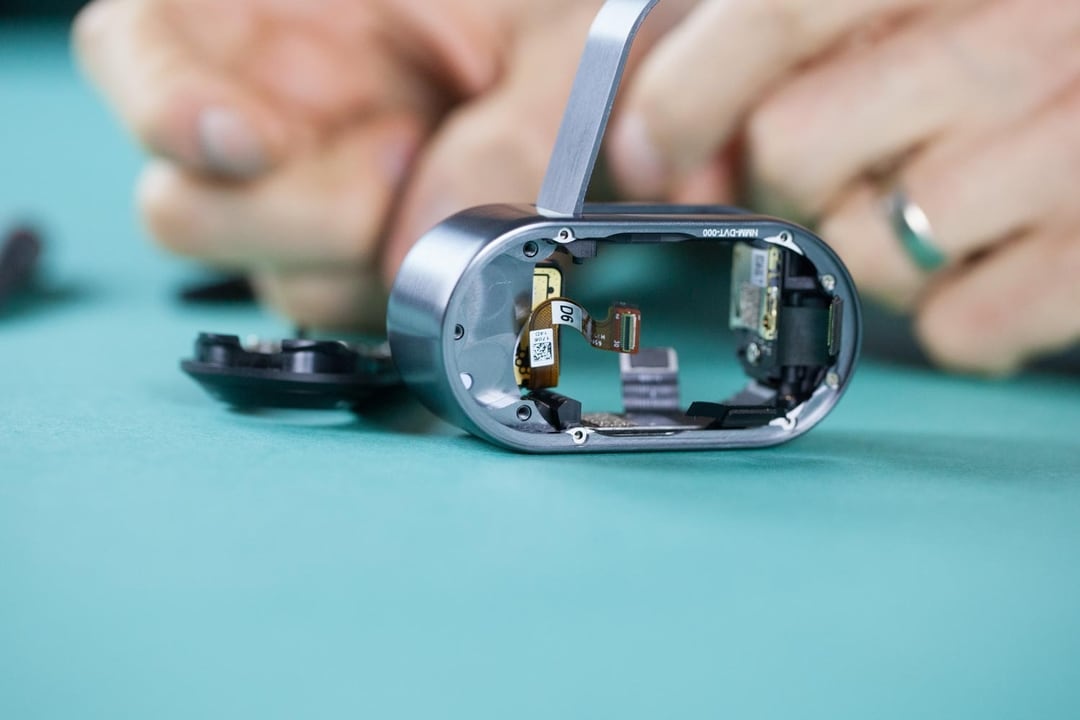
After pulling out the “brains and eyes” of the camera, we found that most of the enclosure was empty space. While this would normally require a fair amount of machine time (and therefore money) to rough out from solid stock, the enclosure starts as an extruded profile, saving a long roughing operation during machining.
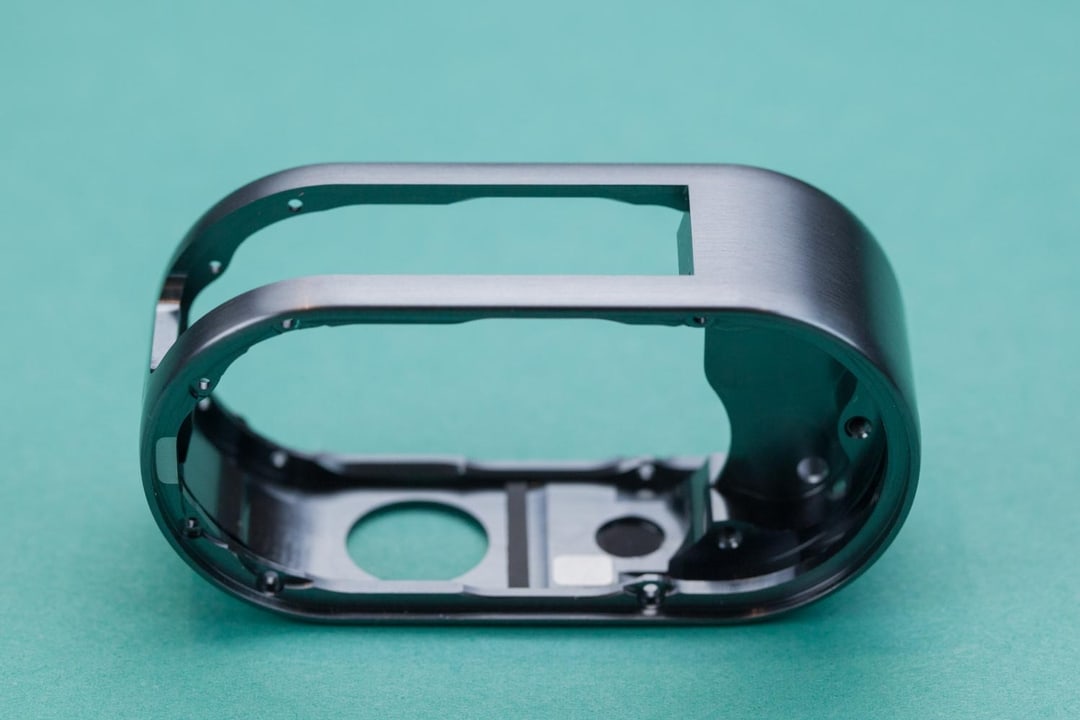
The enclosure design makes use of a 4-axis mill to make the cutout for the battery door. Not only does this save a setup on the mill, but it also allows for a slightly angled surface that is used to hold the battery door frame in place.
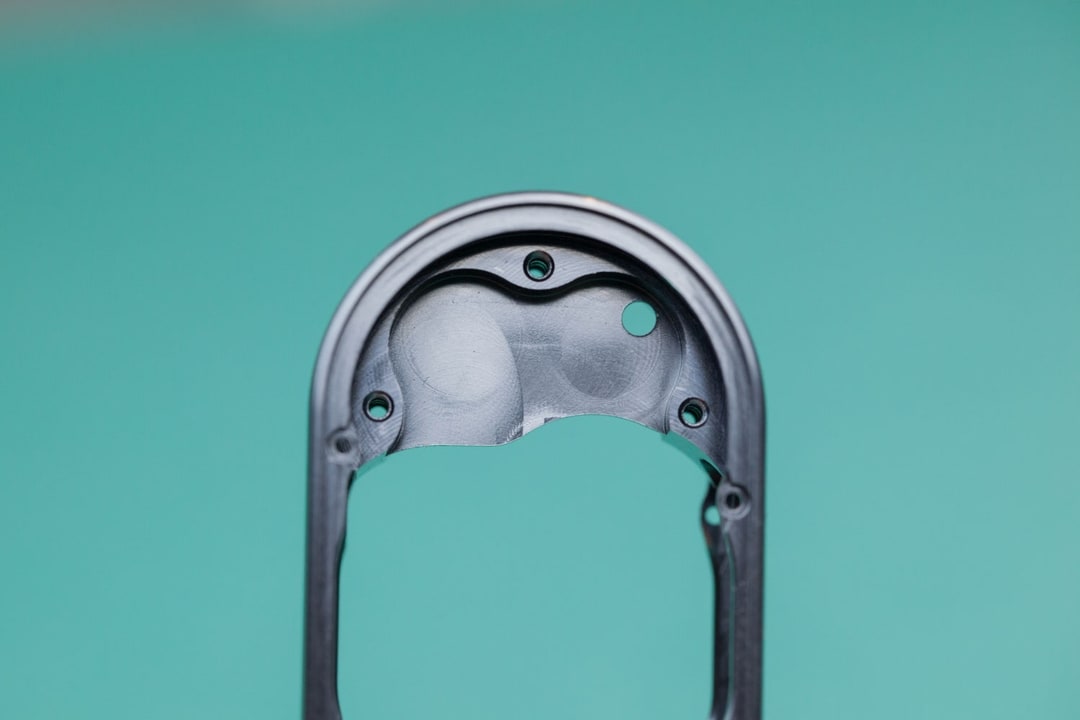
All features were designed so they could be made with as few tools as possible, further reducing machine time by minimizing tool changes. While CNC parts are usually the most time consuming and expensive components in a product, Rylo’s enclosure is cheaper than several other parts in the BOM — an impressive feat!
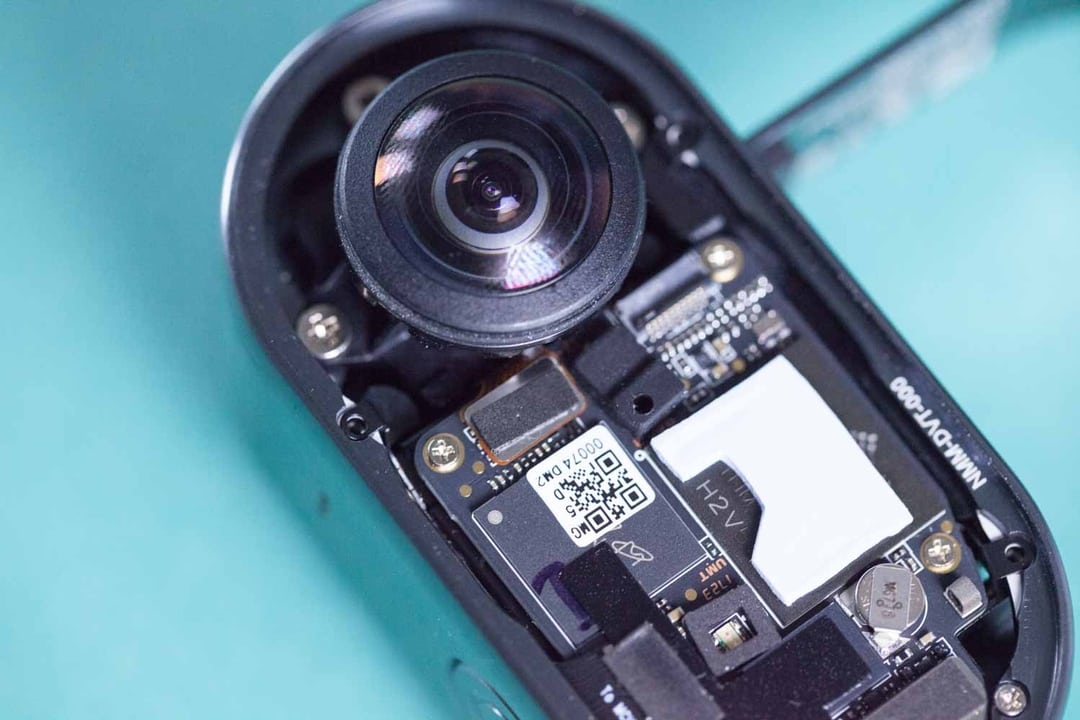
Digging further into the functionality of the enclosure, we found some areas where the anodized coating has been etched away to create a conductive path from the main circuit board to the enclosure, allowing it to act as the ground for the circuit.
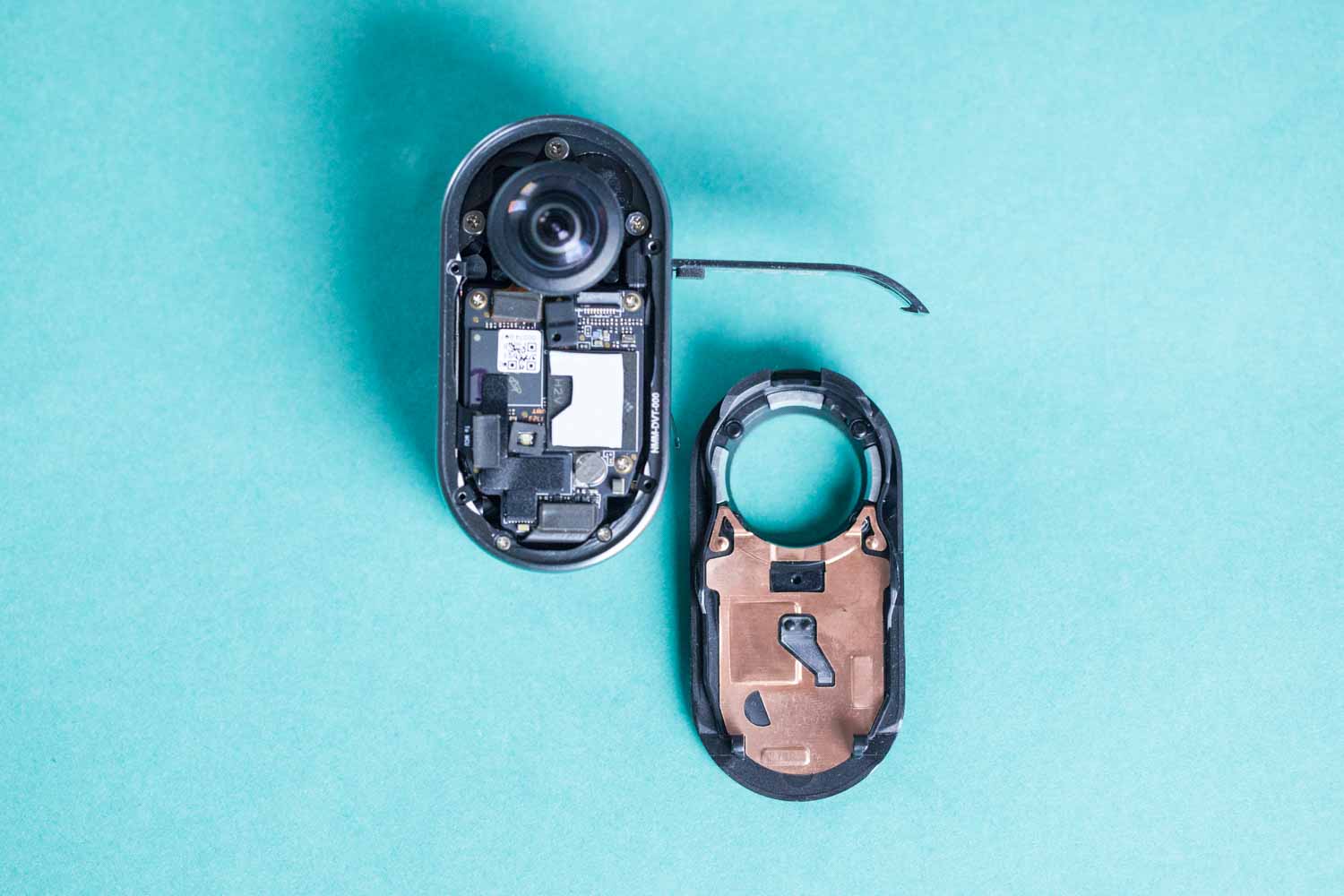
Thermal management is always a concern in cameras, particularly one that is recording 360° video at 4K. That’s why the enclosure also acts as the main heat sink. Its large surface area allows the enclosure to take heat from the PCBAs and the copper conductors mounted in the top and bottom covers, and transfer it to the camera’s surroundings.
Soft Catch Battery Door Mechanism
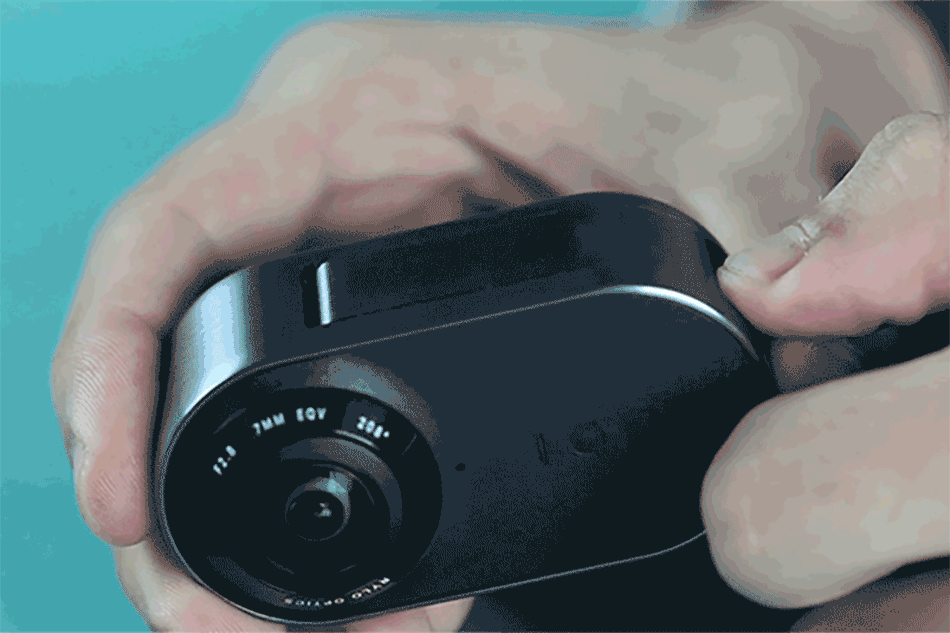
One of Rylo’s most meticulously designed features is the soft catch mechanism hidden in the initially unassuming battery door hinge. This sub assembly went through dozens of 3D printed prototypes to get the feel just right.
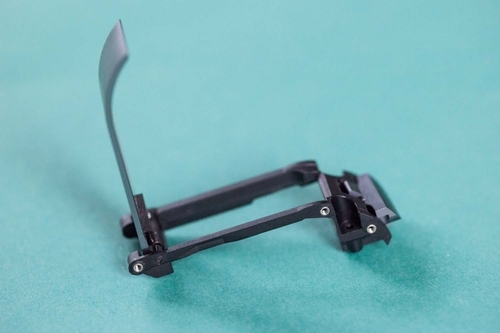
Most spring loaded doors open with a sharp snap due to the door swinging until it collides with a wall, which leads to excess vibrations and an unpleasant feel. Rylo fixes this by having the door progressively interfere with a stop as it opens. This brings the door to a much cleaner stop and lets it open with a buttery smooth pop.
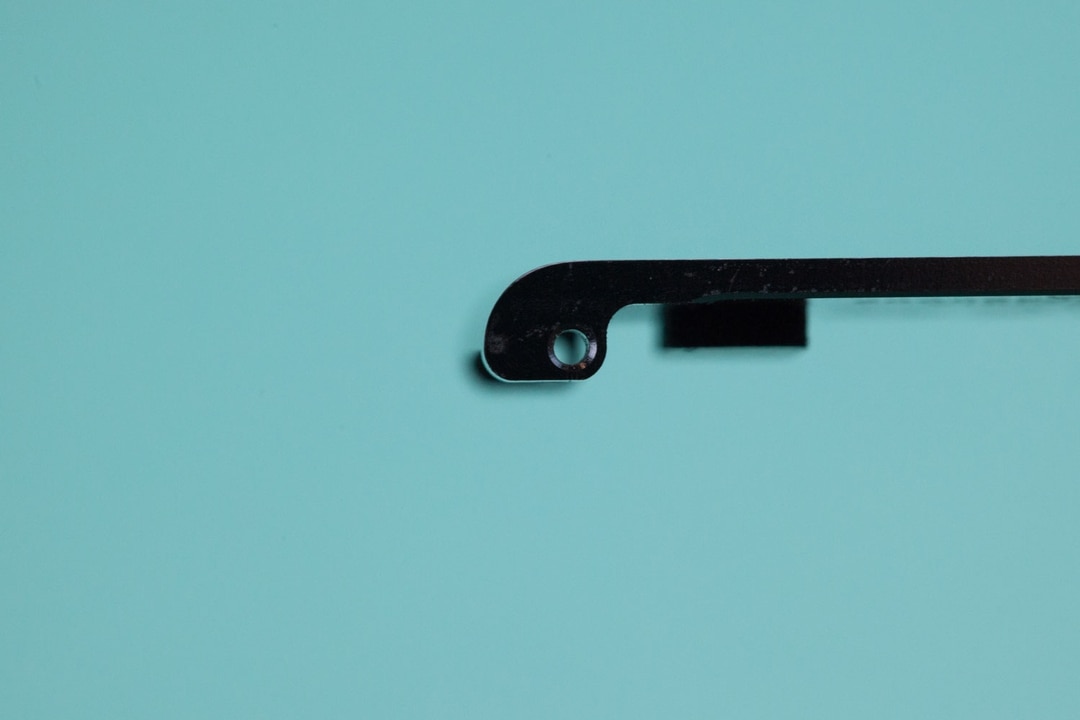
The first half of the soft catch mechanism is an eccentric cam in the back of the CNC machined door. The hole for the pin that the door hinges on is drilled off center from the curved end of the part, meaning as it rotates the door will interfere with the plastic housing underneath it.
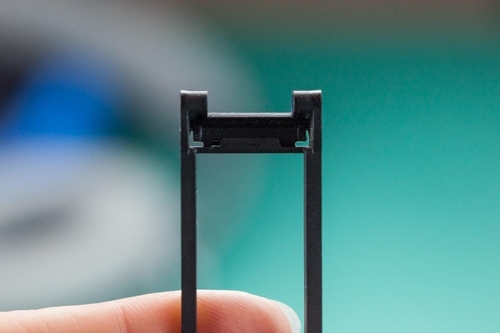
The second half of the mechanism is a flexure molded into the frame that holds the door. Two L-shaped cutouts in the frame allow it to flex out as the door opens and interferes with it. The more the door opens, the more the frame flexes out and thus the harder it pushes back on the door, eventually bringing it to a controlled stop.
Hidden Screw Enclosure Design
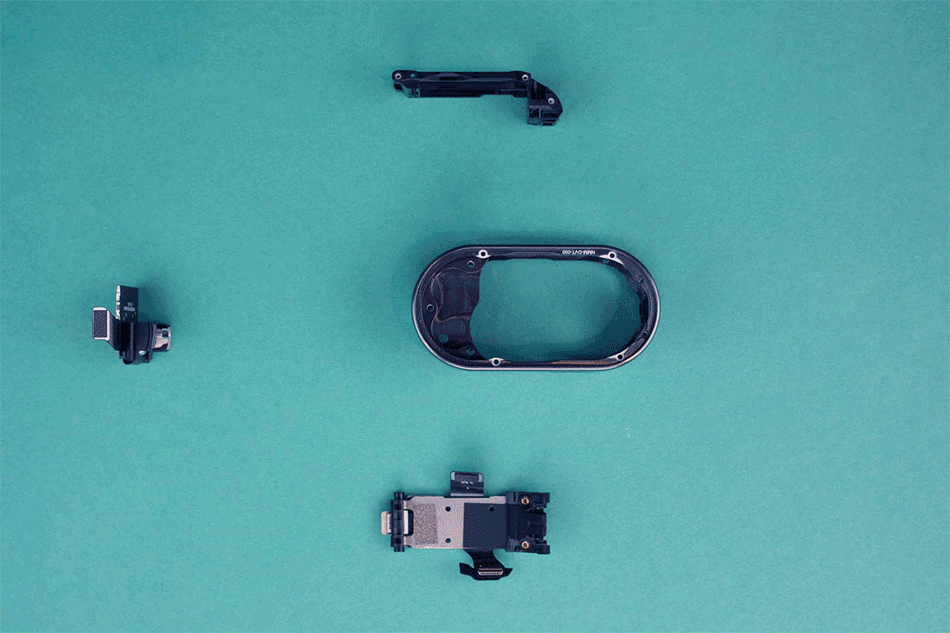
Rylo has a “screw-less” enclosure assembly, which isn’t to say that it uses no screws, but rather it uses a few clever tricks to hide two screws for easier assembly and a seamless enclosure design. The side panels have large tabs at one end that grab onto an undercut that is machined into the enclosure. These, along with a snap fit on either side, allow the panels to slide in easily for assembly but stay snuggly in place. 3D printing was again used here to run through multiple prototypes and get just the right fit.
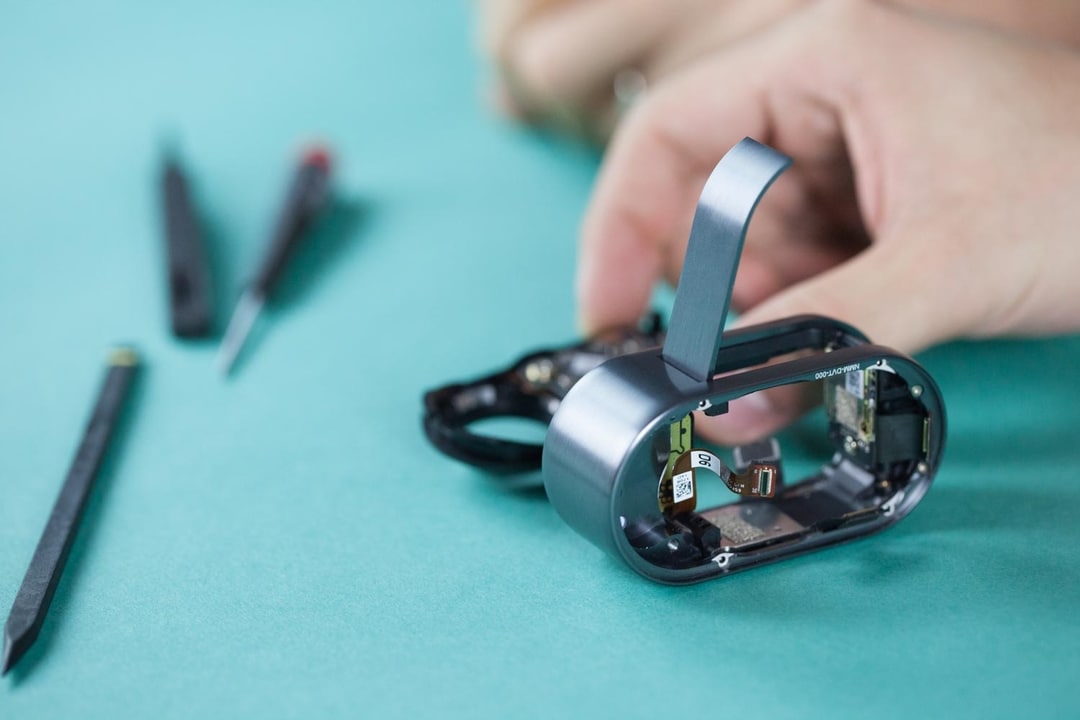
One end of the battery door frame, the flex cable frames, and the side panels all have tabs that grab into the enclosure. The other ends of these parts and the frame that holds the micro USB port are then all held in place by two long screws. Once all the parts are in place, these screws act as pins that keep the parts in alignment. This fully constrains the parts against the enclosure.
Main Takeaways
Tearing down the Rylo showed that the devil, or perhaps the distinguishing difference, is in the details. The parts of a camera most people usually look at — like the shutter button, the display, and the aesthetics — were all well done. However, the amount of thought put into areas most people wouldn’t consider, or even see, is what sets the mechanical design apart.
Before the cameras are even assembled, good design for manufacture makes Rylo’s main enclosure stand out. It serves as the outer shell, heat sink, electrical ground, and mounting point for everything in the camera, and yet avoids the normally high cost of using CNC machined parts in production devices.
Simplifying the assembly process with a smart use of fasteners further reduced the production cost. This also means that if a Rylo breaks, the faulty component can easily be replaced.
The same amount of thoughtfulness that went into the manufacturability also shows in the user experience. The shutter button is intuitively placed and the outer enclosure has a high quality and durable feel of brushed metal. Even an action as simple as opening the door for battery replacement is a satisfying interaction.
